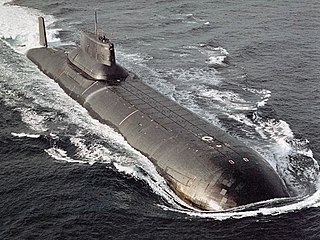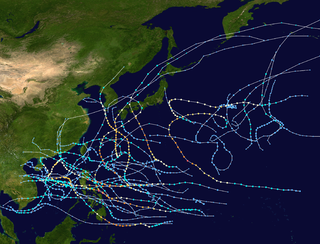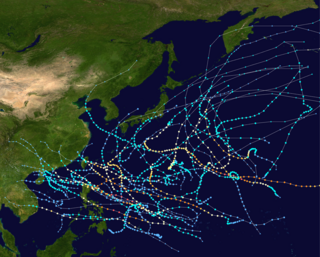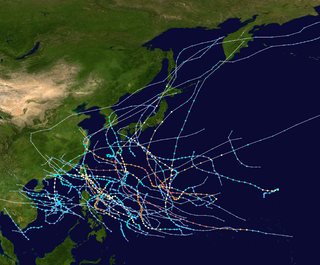
The Eurofighter Typhoon is a European multinational twin-engine,supersonic,canard delta wing,multirole fighter. The Typhoon was designed originally as an air-superiority fighter and is manufactured by a consortium of Airbus,BAE Systems and Leonardo that conducts the majority of the project through a joint holding company,Eurofighter Jagdflugzeug GmbH. The NATO Eurofighter and Tornado Management Agency,representing the UK,Germany,Italy and Spain,manages the project and is the prime customer.

Bound is a 1996 American neo-noir erotic crime thriller film written and directed by the Wachowskis in their feature film directorial debut. It stars Jennifer Tilly,Gina Gershon and Joe Pantoliano. The film centers on Violet (Tilly),a gun moll who longs to escape her relationship with her mobster boyfriend Caesar (Pantoliano),enters into a clandestine affair with alluring ex-con Corky (Gershon),and the two women hatch a scheme to steal $2 million of Mafia money.

The Project 941 Akula,was a class of nuclear-powered ballistic missile submarines designed and built by the Soviet Union for the Soviet Navy. With a submerged displacement of 48,000 t,the Typhoons were the largest submarines ever built,able to accommodate comfortable living facilities for the crew of 160 when submerged for several months. The source of the NATO reporting name remains unclear,although it is often claimed to be related to the use of the word "typhoon" ("тайфун") by General Secretary Leonid Brezhnev of the Communist Party in a 1974 speech while describing a new type of nuclear ballistic missile submarine,as a reaction to the United States Navy's new Ohio-class submarine.

Typhoon Herb,known in the Philippines as Typhoon Huaning,was a deadly and destructive tropical cyclone that became the strongest and largest typhoon of that year’s Pacific typhoon season. Herb struck the RyūkyūIslands,Taiwan and the People's Republic of China,causing major damage. The name Herb was used in the Western Pacific naming list for the first time after the list had been revised earlier in 1996. Despite the damages and number of casualties,the name “Herb”was not retired following the season.

The 1996 Pacific typhoon season was an above average season,producing 30 tropical storms,16 typhoons and six super typhoons. It has no official bounds;it ran year-round in 1996,but most tropical cyclones tend to form in the northwestern Pacific Ocean between May and November. These dates conventionally delimit the period of each year when most tropical cyclones form in the northwestern Pacific Ocean. However the first named storm,Ann,did not develop until April 3. The final named storm,Greg,dissipated on December 27.

The 1959 Pacific typhoon season was regarded as one of the most devastating years for Pacific typhoons on record,with China,Japan and South Korea sustaining catastrophic losses. It was an event in the annual cycle of tropical cyclone formation. The season had no official bounds,but tropical cyclones in the Western Pacific Ocean normally develop between May and October.

The 1976 Pacific typhoon season has no official bounds;it ran year-round in 1976,but most tropical cyclones tend to form in the northwestern Pacific Ocean between June and December. These dates conventionally delimit the period of each year when most tropical cyclones form in the northwestern Pacific Ocean.

The 1970 Pacific typhoon season has no official bounds;it ran year-round in 1970,but most tropical cyclones tend to form in the northwestern Pacific Ocean between June and December. These dates conventionally delimit the period of each year when most tropical cyclones form in the northwestern Pacific Ocean.

The 1967 Pacific typhoon season was one of the most active Pacific typhoon seasons on record,witnessing the formation of 35 tropical storms during the season. It began on January 1,1967,though most storms usually form between June and December within the basin. The first storm of the season,Ruby,formed on January 28 west of the Philippines. The scope of this article is limited to the Pacific Ocean,north of the equator and west of the International Date Line. Storms that form east of the date line and north of the equator are called hurricanes;see 1967 Pacific hurricane season. Tropical depressions that are monitored by the United States' Joint Typhoon Warning Center (JTWC) were given a numerical designation with a "W" suffix,and any storms reaching 1-minute sustained winds of over 40 mph were given a name. Tropical depressions that enter or form in the Philippine area of responsibility are assigned a name by the Philippine Atmospheric,Geophysical and Astronomical Services Administration or PAGASA. This can often result in the same storm having two names.

The 1964 Pacific typhoon season was the most active tropical cyclone season recorded globally,with a total of 39 tropical storms forming. It had no official bounds;it ran year-round in 1964,but most tropical cyclones tend to form in the northwestern Pacific Ocean between June and December. These dates conventionally delimit the period of each year when most tropical cyclones form in the northwestern Pacific Ocean.

The 1961 Pacific typhoon season had no official bounds;it ran year-round in 1961,but most tropical cyclones tend to form in the northwestern Pacific Ocean between June and December. These dates conventionally delimit the period of each year when most tropical cyclones form in the northwestern Pacific Ocean.

Typhoon Omar of 1992,known in the Philippines as Typhoon Lusing,was the strongest and costliest typhoon to strike Guam since Typhoon Pamela in 1976. The cyclone formed on August 23 from the monsoon trough across the western Pacific Ocean. Moving westward,Omar slowly intensified into a tropical storm,although another tropical cyclone nearby initially impeded further strengthening. After the two storms became more distant,Omar quickly strengthened into a powerful typhoon. On August 28,it made landfall on Guam with winds of 195 km/h (120 mph). The typhoon reached its peak intensity the next day,with estimated 1‑minute winds of 240 km/h (150 mph),making it a "super typhoon" according to the Joint Typhoon Warning Center (JTWC). Omar weakened significantly before striking eastern Taiwan on September 4,proceeding into eastern China the next day and dissipating on September 9.

The 1955 Pacific typhoon season has no official bounds;it ran year-round in 1955,but most tropical cyclones tend to form in the northwestern Pacific Ocean between June and December. These dates conventionally delimit the period of each year when most tropical cyclones form in the northwestern Pacific Ocean. The season produced a large number of tropical storms but most of them were weak,and sources from American typhoon warning agencies often grossly overestimated the maximum wind speed of many systems which could not properly match with their respective central pressure observations.

The 1994–95 South Pacific cyclone season was one of the least active South Pacific tropical cyclone seasons on record,with only four tropical cyclones officially occurring within the South Pacific Ocean basin between 160°E and 120°W. The season ran from November 1,1994,until April 30,1995,with the first disturbance of the season developing on November 12 and the last disturbance leaving the base on March 5. The most intense tropical cyclone during the season was Tropical Cyclone Violet,which briefly existed within the basin. After the season,the name William was retired from the tropical cyclone naming lists.

The 1994–95 Australian region cyclone season was a below average Australian cyclone season. It was also an event in the ongoing cycle of tropical cyclone formation. It ran from 1 November 1994 to 30 April 1995. The regional tropical cyclone operational plan also defines a tropical cyclone year separately from a tropical cyclone season,and the "tropical cyclone year" ran from 1 July 1994 to 30 June 1995.

Typhoon Violet was an unusually intense super typhoon that made landfall in Japan in early October 1961. It was the second strongest typhoon of the year with wind speeds up to 205 mph,which made Violet the third strongest tropical cyclone in terms of 1 minute sustained winds,just behind Typhoon Nancy in the same year and Hurricane Patricia in 2015.
Robert Gys (1901–1977) was a French art director.
















